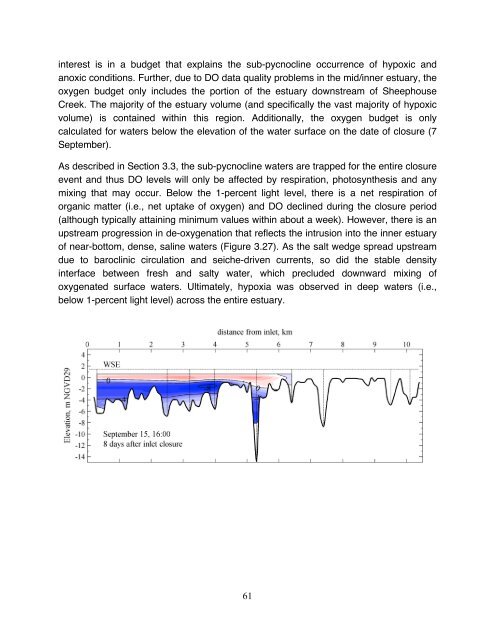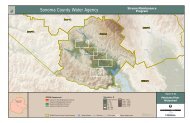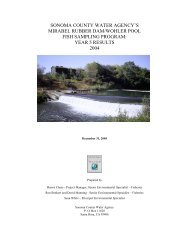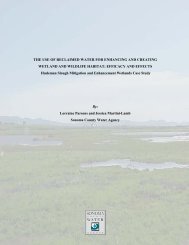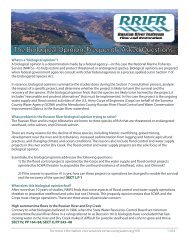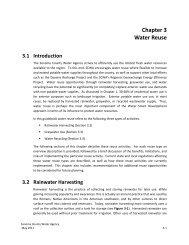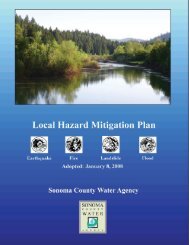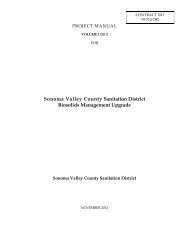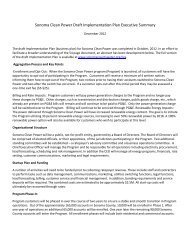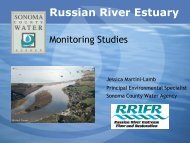Hydrography of the Russian River Estuary - Sonoma County Water ...
Hydrography of the Russian River Estuary - Sonoma County Water ...
Hydrography of the Russian River Estuary - Sonoma County Water ...
Create successful ePaper yourself
Turn your PDF publications into a flip-book with our unique Google optimized e-Paper software.
interest is in a budget that explains <strong>the</strong> sub-pycnocline occurrence <strong>of</strong> hypoxic and<br />
anoxic conditions. Fur<strong>the</strong>r, due to DO data quality problems in <strong>the</strong> mid/inner estuary, <strong>the</strong><br />
oxygen budget only includes <strong>the</strong> portion <strong>of</strong> <strong>the</strong> estuary downstream <strong>of</strong> Sheephouse<br />
Creek. The majority <strong>of</strong> <strong>the</strong> estuary volume (and specifically <strong>the</strong> vast majority <strong>of</strong> hypoxic<br />
volume) is contained within this region. Additionally, <strong>the</strong> oxygen budget is only<br />
calculated for waters below <strong>the</strong> elevation <strong>of</strong> <strong>the</strong> water surface on <strong>the</strong> date <strong>of</strong> closure (7<br />
September).<br />
As described in Section 3.3, <strong>the</strong> sub-pycnocline waters are trapped for <strong>the</strong> entire closure<br />
event and thus DO levels will only be affected by respiration, photosyn<strong>the</strong>sis and any<br />
mixing that may occur. Below <strong>the</strong> 1-percent light level, <strong>the</strong>re is a net respiration <strong>of</strong><br />
organic matter (i.e., net uptake <strong>of</strong> oxygen) and DO declined during <strong>the</strong> closure period<br />
(although typically attaining minimum values within about a week). However, <strong>the</strong>re is an<br />
upstream progression in de-oxygenation that reflects <strong>the</strong> intrusion into <strong>the</strong> inner estuary<br />
<strong>of</strong> near-bottom, dense, saline waters (Figure 3.27). As <strong>the</strong> salt wedge spread upstream<br />
due to baroclinic circulation and seiche-driven currents, so did <strong>the</strong> stable density<br />
interface between fresh and salty water, which precluded downward mixing <strong>of</strong><br />
oxygenated surface waters. Ultimately, hypoxia was observed in deep waters (i.e.,<br />
below 1-percent light level) across <strong>the</strong> entire estuary.<br />
61


